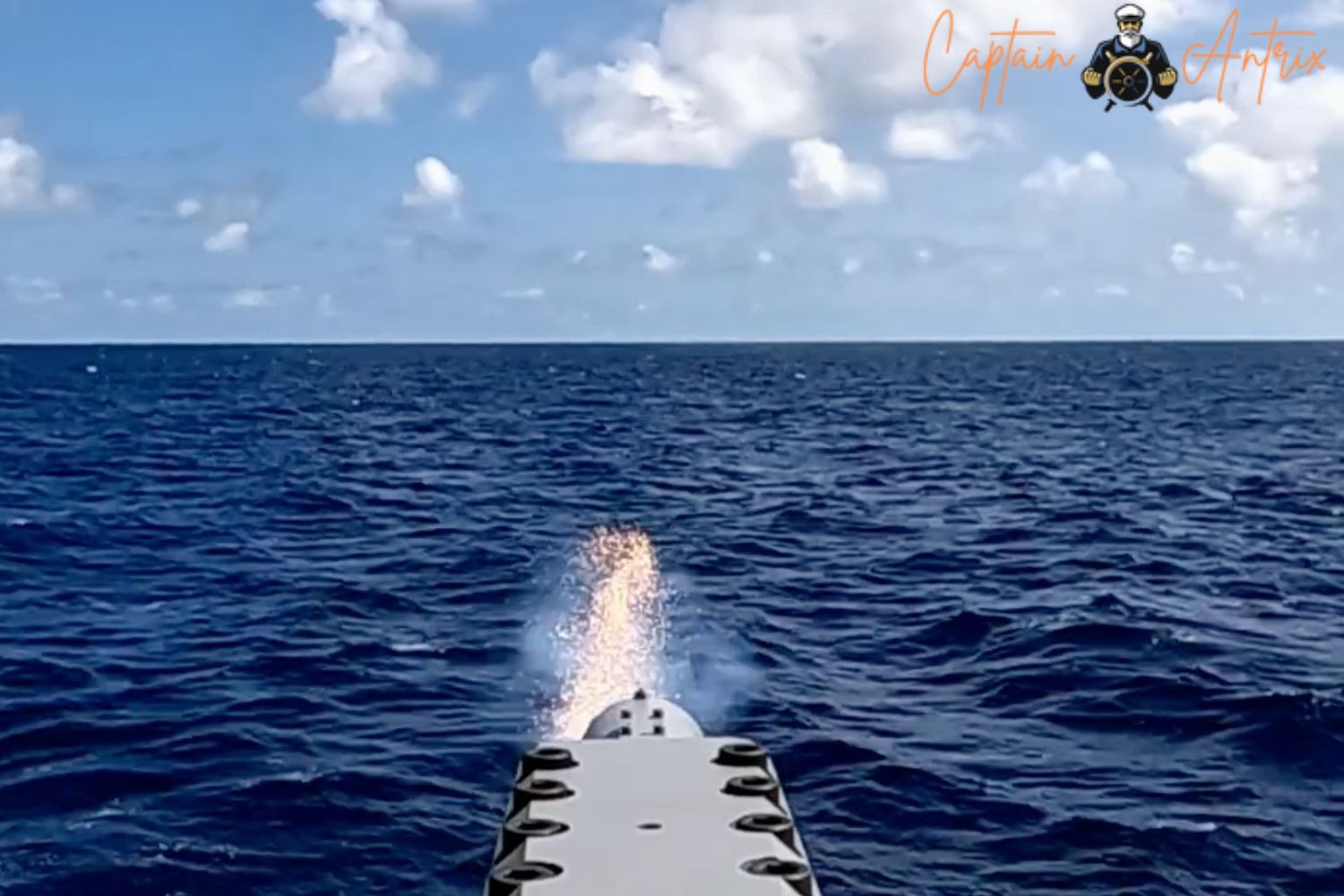
In a remarkable technological achievement, the Japan Maritime Self-Defense Force (JMSDF) has unveiled a state-of-the-art electromagnetic (EM) railgun, representing Japan's significant stride into advanced weaponry and a reaffirmation of its commitment to safeguarding its territorial waters and land while enhancing stability in the Indo-Pacific region. This cutting-edge technology is the result of extensive research and development efforts conducted in collaboration with the Acquisition, Technology & Logistics Agency (ATLA) and various other organizations.
Under the careful supervision of the JMSDF Commander, this groundbreaking railgun is being meticulously developed at the Ground Systems Research Center located at the Shimokita Test Center. The latest achievement in this remarkable defense journey occurred on October 17th when Japan conducted its first-ever shipboard test firing of an EM railgun.
1. A Pivotal Advancement
The JMSDF has harnessed the capabilities of its test ship, the JS ASUKA, under the Fleet Research and Development Command, to assess and improve this advanced equipment. Commissioned in March 1995, the JS ASUKA has played a vital role in conducting numerous tests for various equipment components before their deployment on JMSDF vessels. Recent accomplishments include the successful launch test of a long-range ship-to-air missile and a firing test of the EM railgun at sea. This proactive approach underscores the JMSDF's dedication to enhancing its defense capabilities and ensuring the safety of Japan's territorial land and waters, as well as the well-being of its citizens.
2. A Beacon of Cooperation
Japan's commitment to achieving a Free and Open Indo-Pacific is demonstrated through its collaborative efforts with allied and like-minded navies, contributing to peace and stability in the region.

3. JS ASUKA: A Vital Testing Platform
The test, officially announced by the Ministry of Defense's Acquisition, Technology & Logistics Agency, took place aboard the JMSDF's research ship, JS ASUKA. JS Asuka (ASE-6102), an experimental ship of the Japan Maritime Self-Defense Force, was constructed by Sumitomo Heavy Industries of Tokyo, Japan, and launched on June 21, 1994. Commissioned on March 22, 1995, it has been instrumental in conducting performance confirmation tests for integrated navigation systems. This 151-meter vessel, with a full-load displacement of approximately 6,200 tonnes, serves as a vital platform for the ongoing testing and evaluation of the EM railgun. Originally commissioned as a survey and research ship in 1995, JS ASUKA boasts a destroyer-like profile and is equipped not only with the EM railgun but also an eight-cell vertical launching system (VLS) and sonar systems, further enhancing its capabilities in evaluating anti-submarine warfare systems.
4. Unlocking the Technology
While specific technical details of the EM railgun remain classified for security reasons, a three-dimensional diagram provided by the Ministry of Defense reveals the presence of a conductive rail barrel within a trainable turret mount. Key specifications such as muzzle velocity and projectile weight are currently kept confidential. The Japanese Ministry of Defense has emphasized that these evaluations aim to determine the practical applications of the EM railgun for future defense requirements.
5. A Vision for a Secure Future
The introduction of the EM railgun into Japan's defense arsenal highlights the nation's unwavering commitment to maintaining a leadership position in defense technology. This commitment is rooted in ensuring the security of its territory and fostering peace and stability in the Indo-Pacific region through collaborative efforts with allies and partners. As this promising technology continues to evolve, it remains a symbol of Japan's dedication to securing a brighter and more secure future.
